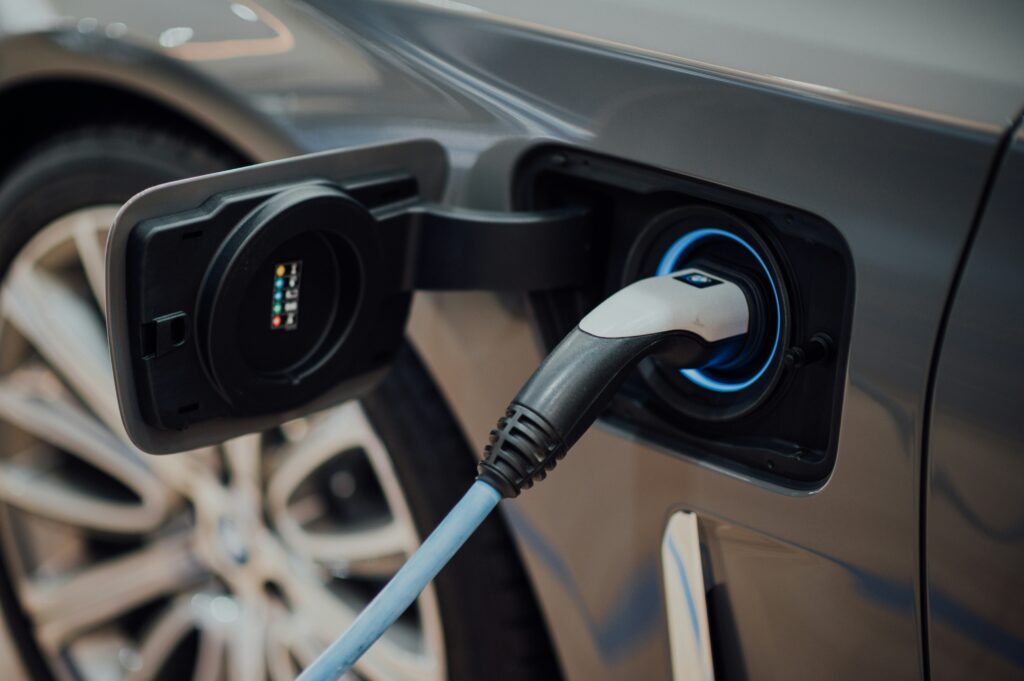Electric vehicles are making a world of a difference on both economic and sustainability fronts, with around 40 million electric vehicles swiftly racing along roads and highways across the globe in 2024. This marks a significant increase in comparison to 2014, in which only 700,000 electric vehicles (EVs) were on the road worldwide. Within the decade, the EV market dynamic has swayed significantly in favor of Chinese manufacturers over European and American EV automakers. Relatively low prices and high vehicle abundance makes overseas EV imports an economically attractive option. The European Union has recognized this shift and attempts to move towards sustainable practices and increased EV manufacturing domestically, meanwhile competition over the EV industry comes to a head.
Race to EV Success
China once staggered well behind European nations and the United States in terms of electric vehicle advancements, sales, and car stocks (cars on the road). But multiple factors have contributed to the country’s recent success in the EV industry. Since the Asian country introduced electric vehicles as a priority science research project in their 2001 economic blueprint, China’s Five-Year Plan, China has earned a significant slice of the pie in automobile sales.

Dually contributing to China’s electric vehicle success are the tremendous subsidies that China-based manufacturers receive from the government, which totals to $231 million over the past 15 years, according to Bloomberg News1. About half of this support comes in the form of sales tax exemptions, while another significant portion is through nationally approved buyer rebates and funding for low-cost charging ports and R&D support programs. China also dominates 95% of the production of lithium-ion batteries– a main energy storage system component in commercial electric and hybrid vehicles2.
These components contribute to China’s current success in the electric automobile sector, as it tops Europe and the United States in EV sales with 8.1 million units sold a year. While a significant portion of these sales are domestic, a considerable portion of Chinese EVs are imported to European countries, as well3. According to the research group Transport and Environment, 20% of electric cars in the European Union (EU) were imported from China in the year 20234, reaching $11.5 billion5.

Current Events and Challenges
China’s overwhelming presence in the EV market has led to recent concerns for domestic EV markets in the European Union and United States. Cheaply priced EVs and EV parts imported from China into the European-bloc have clogged domestic sales of EVs in countries like Germany, which experienced a 30% plunge in EV sales in 20236. The country prematurely cut its e-car subsidy program in favor of maintaining its notorious debt brake program, leaving the German EV market vulnerable to a takeover by China-based manufacturers. This reflects Europe’s generally increasing reliance on Chinese EVs7.
On June 12, 2024, the EU announced that it will impose additional tariffs from 17% to 38% on EVs imported from China, in hopes to stimulate domestic EV markets. This follows an investigation launched by the European Commission in September 2023 that determined EV production in China benefited from “unfair subsidization” from the Chinese government and “caus[ed] a threat of economic injury to EU BEV producers.” Although the tariffs are preliminary and vary depending on the manufacturer, they will be charged in addition to the EU’s standard 10% tax on imported vehicles, and aim to “remove the substantial unfair advantage” posed by China’s EV supply chains8. The United States took similar measures just weeks earlier on May 14, increasing tariff rates on EVs to 100%. Although the United States is not equally reliant on EV imports from China as its European counterparts, the announcement was symbolic and established the States’ affinity with the EU regarding the subject9.
Market Outlooks
Looking towards the future of the electric vehicle market in the EU and China, the European Commission hopes these tariffs “ensure that EU and Chinese industries compete on a level playing field,” rather than cut EV trade ties with China completely. A 2023 Rhodium Group study suggests that tariffs would need to be as high as 45% to 55% in order to effectively and completely drive away the Chinese EV manufacturing industry from European markets. Chinese automakers are anything but deterred by these tariffs; Cui Donghshu, secretary general of the China Passenger Car Association, said that the measures “won’t have much of an impact on the majority of Chinese firms,” while other Chinese automakers have expanded their trade with Europe following the tariff announcement8.
If anything, these new tariffs are expected to negatively impact Western automakers, instead. The aforementioned Rhodium Group study notes that tariffs between 15% and 30% are likely to impact companies like Tesla and BMW, which utilize manufacturing facilities based in China, rather than Chinese automakers. This has already come to fruition, as Tesla announced a price increase by 2,000 euros ($2,117) in its Model Y electric vehicle on March 22, 202410. It is yet to be seen whether or not these tariffs will have a long term effect on EV imports and domestic EV production, and the effect of the imposed additional tariffs on clean energy initiatives in Europe is uncertain and ongoing.
Additional Outlooks
These recent tariffs have larger implications for external markets including lithium production, charging stations, etc., outside of the immediate EV market.
Lithium battery prices:
Lithium-ion batteries serve as the main power source in modern EVs, with their quality high-temperature performance, high energy efficiency, high energy per unit mass, and easy scalability and portability. The market is highly volatile, however, and when demands for EVs plummet, so does the market for lithium batteries. The slowing growth of EV sales in China in 2024 has led to a decline in the price of lithium batteries. Recent tariffs imposed by the EU will intensify China’s EV market slowdown, and with this, prices of lithium batteries may inevitably drop even steeper.

Lithium Production and R&D:
In response to these current market dynamics, big-name lithium production companies have cut down production drastically in comparison to their spending predictions for the year. Albemarle, the world’s largest lithium provider for electric vehicle batteries11, has cut spending on major lithium conversion projects, including its greenfield projects in the United States. Net sales for the company have decreased by 10.1% over the past year. Moreover, the company’s quarter four financial report for 2023 indicated a decline of EBITDA by $315 million. However, outlooks for 2024 are looking up with a forecasted increase in lithium production by 35.7%.
This decreased production has also resulted in an increase in merger and acquisition (M&A) activity, especially among lithium and other critical mineral producers of copper and nickel. Copper and nickel are equally critical in the production of EVs, and large-scale companies have taken advantage of the vulnerable positions of small junior companies looking to sell their projects in a time of low private capital. London-based lithium company Rio Tinto executed a $3.1 billion takeover of copper developer Turquoise Hill Resources, while Melbourne-based company BHP acquired the copper and nickel producer, OZ Minerals, through a $6.4 billion deal in 202312.
The electric vehicle industry is highly volatile and subject to great change in the coming years. It is clear that China’s monopoly over lithium batteries and the production of electric vehicles has spurred administrative and policy changes to take advantage of the incredibly profitable, environmentally friendly, and economically attractive industry. These changes have outstanding effects on the wider mineral production industries, forecasted trends on research and development, and the future of major lithium and EV producers around the globe.
About the Author
Maya Schwartz is a Summer Associate in HM.
For further information, contact:
Cora Ang: Partner | [email protected] (https://hmstrategy.com/)
Disclaimer: The material in this post represents general information only and should not be relied upon as legal advice. Holland & Marie Pte. Ltd. is not a law firm and may not act as an advocate or solicitor for purposes of the Singapore Legal Profession Act.
1 “China’s EV Makers Got $231 Billion Aid Over 15 Years, Study Says”, Bloomberg, June 21, 2024.
2 “Batteries for Electric Vehicles” Alternative Fuels Data Center, US Department of Energy. Accessed June 23, 2024.
3 “Trends in Electric Cars – Global EV Outlook 2024 – Analysis” IEA. Accessed June 23, 2024.
4 “One in Four EVs Sold in Europe This Year Will Be Made in China – analysis” Transport & Environment, March 27, 2024.
5 Eddy, M. “European Union Hits e.v.s from China with Extra Tariffs up to 38%” The New York Times, June 12, 2024.
6 Parodi, A, and Fondahn, G. R. “EU Electric Car Sales Drop in May as German Demand Slumps, Industry Says” Reuters, June 20, 2024.
7 Martinez, Maria, et al. “Germany Clinches Last-Minute 2024 Budget Deal, Keeps Debt Brake”, Reuters, December 24, 2023.
8 Reinsch, W. A., and Whitney, J. “Unpacking the European Union’s Provisional Tariff Hikes on Chinese Electric Vehicles” CSIS, June 21, 2024.
9 Bartlett-Imadegawa, R and De Beaurepaire, C “EU Slaps Additional Duties of up to 38% on Chinese EVs” Nikkei Asia, June 12, 2024.
10 “Tesla to Raise U.S. Prices for Model Y Vehicles by $1,000 on April 1” CNBC, March 16, 2024.
11 L, Jennifer. “Albemarle Shifts Focus in Lithium Strategy amid Market Softening” Carbon Credits, January 22, 2024.
12 Noto, A. “Mining M&A Intensifies” Global Finance Magazine, May 17, 2024.





